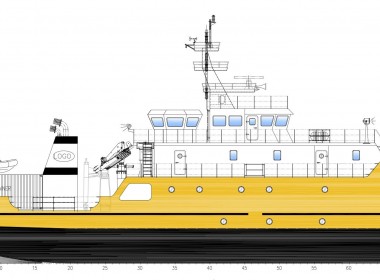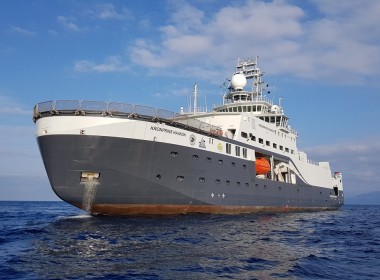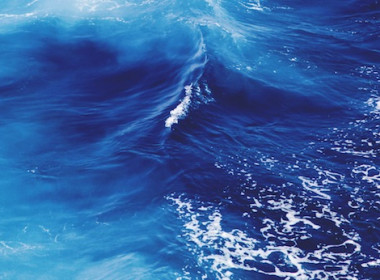VESSEL REVIEW | Nuyina – Heavy-duty icebreaking research vessel for Australian service

The Australian Antarctic Division (AAD), the Australian government’s lead agency in scientific activities related to Antarctica and the Southern Ocean, has been operating a new large research vessel capable of transporting personnel and cargo even under harsh environmental conditions.
Named Nuyina after an Aboriginal Tasmanian palawa kani word for “southern lights,” the vessel was designed by Knud E. Hansen and the Damen Shipyards Group and built by Damen Shipyards Galati in Romania over a period of four years, concluding in August 2021. The AAD regards the vessel as a “floating research station” and a lifeline asset for the transport of vital personnel, equipment, and other cargo to and from Australia’s research stations on the frozen continent. The vessel is also capable of operations even under conditions of Sea State nine (wave heights of over 14 metres) and Beaufort Force 12 (hurricane-force winds) and temperatures as low as minus 30 degrees Celsius.
The Lloyd’s Register-classed Nuyina has an LOA of 160.5 metres, a moulded beam of 25.6 metres, a maximum draught of 9.2 metres, and a full load displacement of over 24,000 tonnes. The vessel can deploy a wide range of vehicles, including helicopters, landing barges, and amphibious trucks to support resupply operations, in addition to providing a modern platform for marine science research in both sea ice and open water with a large moonpool for launching and retrieving sampling equipment and remotely operated vehicles (ROVs). Dry cargo totalling 1,200 tonnes and 96 TEUs can be transported along with 1.9 million litres of fuel to be supplied to remote research stations.
Unique to the vessel is a hybrid propulsion system to provide both the high power needed for icebreaking and silent running for science operations. The propulsion system is a combined diesel-electric and diesel (CODLAD) arrangement with two 19,200kW diesel engines and four diesel generators driving electric motors with controllable-pitch propellers. This configuration enables the vessel to reach a maximum speed in excess of 16 knots, an open-water cruising speed of 12 knots, and a speed of three knots when breaking through 1.65-metre-thick ice. Economical cruising will yield a range of over 29,000 kilometres.
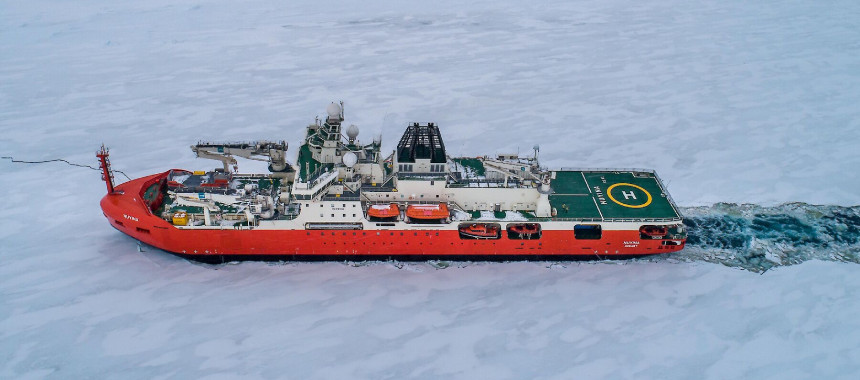
The engine room on deck two is split into two separate rooms to provide an enhanced level of safety and redundancy. Each room houses one diesel engine and two diesel generators.
Three bow and three stern thrusters aid in close-quarters manoeuvring, such as during berthing/unberthing and avoiding glaciers and other large chunks of surface ice. The thrusters also operate in conjunction with the vessel’s own dynamic positioning (DP) system for station keeping during resupply or rough weather.
Sensitive acoustic instruments are mounted on dual drop keels and multi-beam bathymetric sonars will enable seafloor mapping. Flexible and modular science laboratories provide scientists with a diverse selection of facilities needed for conducting vital research in various fields. Some of the scientific equipment are from Scanmar, including acoustic instruments to map and visualise the seafloor and organisms in the water column, and instruments to measure atmospheric gases, cloud properties, wave heights, and ice conditions.
The trawl deck on deck four is the scientific heart of Nuyina, where nets, sediment corers, rock drills, cameras, mooring systems, robotic vehicles, and many other oceanographic instruments are deployed using a variety of winches and cranes. Most deployments are achieved using a 30-tonne A-frame, using winches housed below deck and protected from the elements. If required, crew can safely control the deployment from a small office overlooking the trawl deck. Scientists can monitor their deployments from their smartphones or computers, anywhere on the ship, through data and/or vision provided by cameras and sensors mounted on equipment and via fibre-optic winch cables.
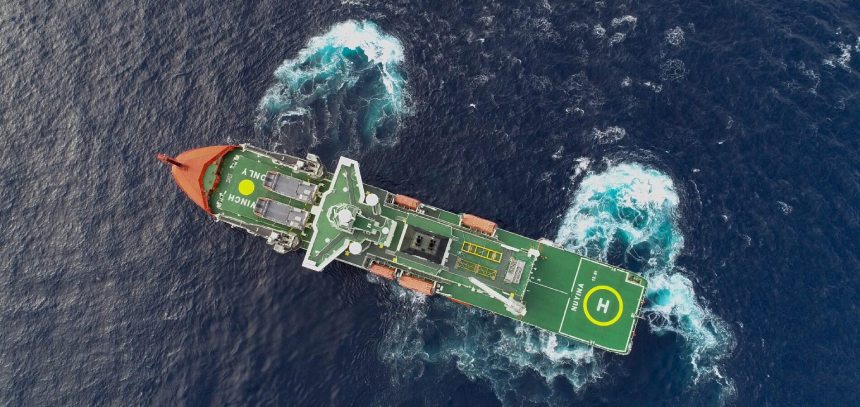
The vessel also has a “monkey deck” that hosts a range of meteorological sensors that measure wind, pressure, temperature, and humidity. Scientists also run instruments that measure solar radiation and clouds and have access to heated observation boxes for the study of seabirds, whales, and other marine mammals. Other equipment on the monkey deck and the adjoining crow’s nest are radars and satellite navigation equipment.
The bridge provides excellent 360-degree visibility thanks to the incorporation of full-length, floor-to-ceiling windows. This provides the crew with a bird’s eye view of current and impending weather, waves, and icebergs in all directions around the ship.
Besides the typical sensors and instruments for communication and navigation, there are also consoles for operating equipment such as the ship’s lights, drop keels, acoustic instruments (for seafloor mapping), and the DP system.
The significant volumes of data collected by the vessel during its expeditions are captured on two portable storage devices that can each hold 80 terabytes. To make the data useful to end users, the data are formatted and organised to comply with the AAD’s onshore data management system. At the end of each voyage, the data are uploaded to a cloud for anyone to access.
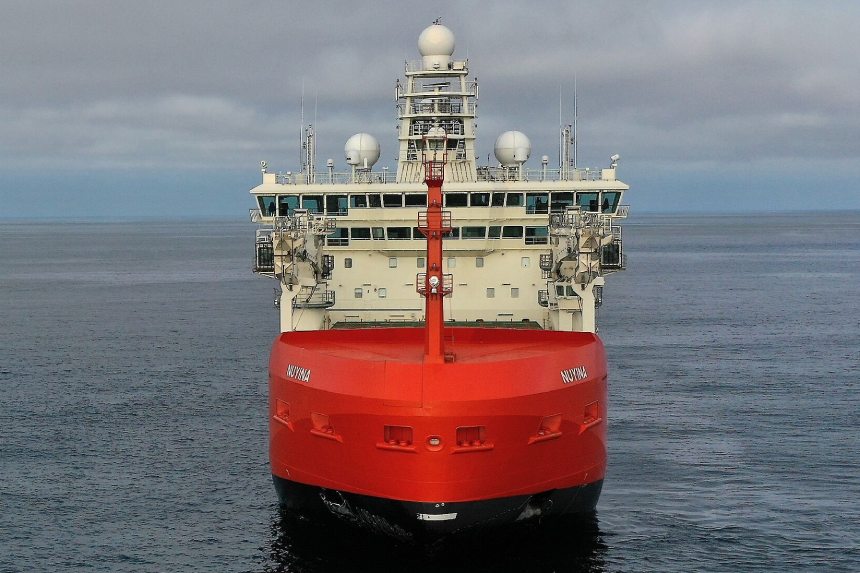
Like the bridge, the vessel’s observation deck provides panoramic views across the bow. Expeditioners can also use this space to relax in a comfortable lounge setting while watching the surroundings outside. This area also features a small tea room and an adjacent meeting room.
The array of vehicles that can be transported by Nuyina includes a fleet of small watercraft that provide essential scientific and logistical support. Among these vessels are a science tender, two personnel transfer tenders, a stern tender, and two barges. These smaller craft have dedicated stowage positions on board the larger ship plus small cranes for lifting and securing them in place, power outlets to charge batteries and warm up engines, and facilities for refueling.
Accommodations for the 32 crewmembers and 117 passengers is spread across five decks. Those crewmembers in senior roles reside on deck eight, directly underneath the observation deck, for quick access to the bridge. The ship’s doctors run a medical facility on deck seven, which also has direct access to the flight deck in case a patient needs to be evacuated by helicopter.
The majority of expeditioners share two-bed cabins in the lower and more stable part of the ship – decks six and five, and a small number on deck four. The cabins each have bunk beds, two desk spaces, cupboards and drawers, and an en suite bathroom. The mess and galley area provides the crew with relaxed café-style dining and includes a large self-servery and adjoining scullery with industrial dish washing facilities. The galley boasts a full-scale commercial kitchen containing ovens, cooktops, microwaves, dishwashers, stainless steel sinks, and a bread maker.
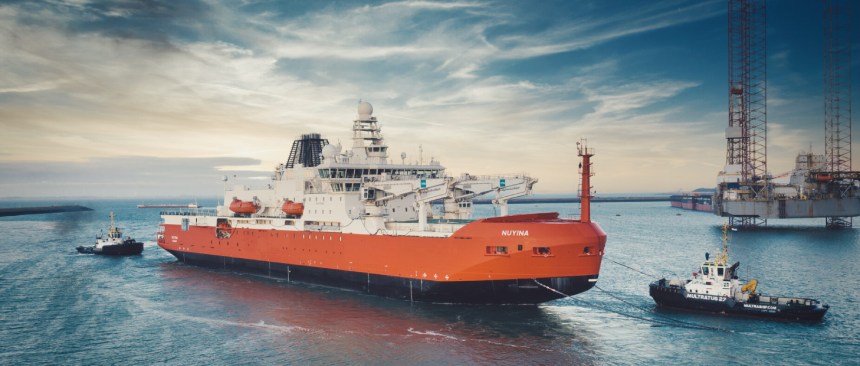
Nuyina is being operated by UK-based Serco, through Serco Australia, on behalf of the Australian government. The vessel sailed on its first voyage to Antarctica in December 2021 and completed the journey of over 13,000 kilometres in 39 days to reach Australia’s Davis and Macquarie Island research stations and resupply these with over one million litres of fuel, enabling continued operations for another year. Two helicopters and their respective crews were also transported by the massive vessel on this trip for deployment out of Davis research station.
The voyage also served as an opportunity for personnel from the AAD and Serco to conduct a series of tests on many of the onboard scientific systems as part of a commissioning process to set up the vessel for the next 30 years of operation. Other activities on this first voyage include capturing 15,000 Antarctic krill and mapping 93,155 square kilometres of the seafloor.
| Nuyina | |
| SPECIFICATIONS | |
| Type of vessel: | Research and supply vessel |
| Classification: | Lloyd’s Register |
| Flag: | Australia |
| Owner: | Australian Government |
| Operator: | Serco Australia |
| Designers: | Knud E. Hansen, Denmark; Damen Shipyards Group, Netherlands |
| Builder: | Damen Shipyards Galati, Romania |
| Length overall: | 160.5 metres |
| Beam: | 25.6 metres |
| Draught: | 9.2 metres |
| Displacement: | 24,000 tonnes |
| Main engines: | 2 x 19,200 kW |
| Propulsion: | 2 x controllable-pitch propellers |
| Generators: | 4 |
| Side thrusters: | 5 |
| Maximum speed: | 16 knots |
| Cruising speed: | 12 knots |
| Range: | 29,000 kilometres |
| Other equipment installed: | Moonpool; A-frame; Scanmar acoustic instruments |
| Tenders: | 6 |
| Type of fuel: | Diesel |
| Accommodation: | Laboratories; observation deck/lounge; medical facility; cabins; mess; galley |
| Crew: | 32 |
| Passengers: | 117 |
| Operational area: | Antarctica |




